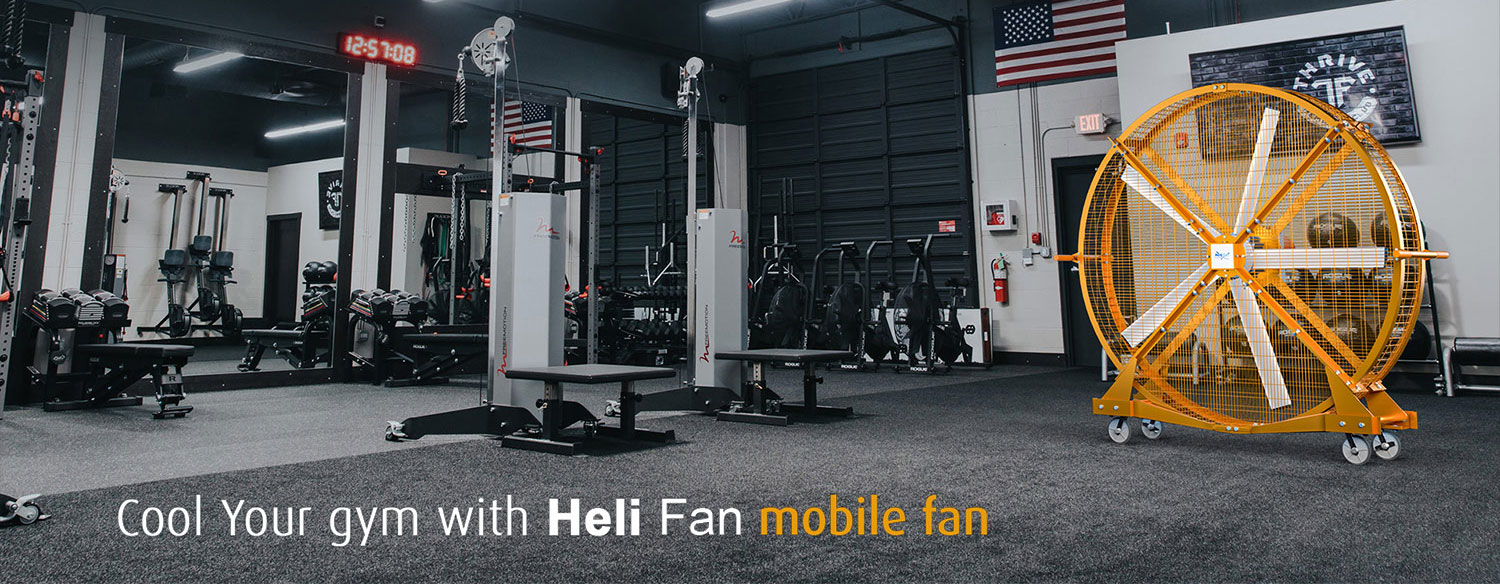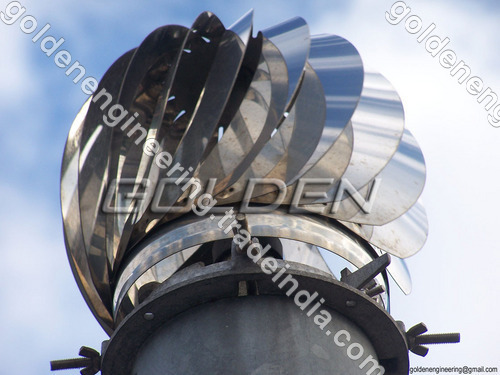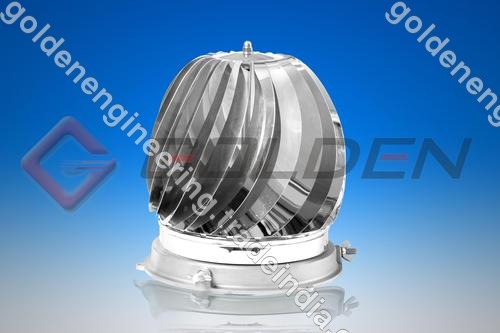- Home Page
- Company Profile
-
Our Products
- HVLS - High Volume Low Speed Fans
- HeliFan of 8 feet diameter to 24 feet BLDC Motor
- HVLS Fans
- Heavy Duty HVLS Fans
- Gearless HVLS Fans
- 24 Feet Industrial Ceiling Fan
- Airport HVLS Fan
- Big Ass HVLS Fan
- Big Commercial Fan
- Industrial HVLS Fan
- BLDC HVLS Fan
- Church HVLS Fan
- High Air Volume HVLS Fan
- HVLS Ceiling Fan
- Commercial HVLS Fan
- HVLS Fan For Church
- 5 Blade HVLS Fan
- Industrial Big HVLS Fan
- Industrial Ceiling Fan
- Large Ceiling Fan
- Industrial Giant HVLS Fan
- Large Diameter Ceiling Fan
- Large Farm House Fan
- Masjid Hvls Fan
- Parking HVLS Fan
- Party Plot Hvls Fan
- PMSM HVLS Fan
- Renewable Energy Fan
- Restaurant HVLS Fan
- Turbovent Ventilator
- Turbine Air Ventilator
- Ventilation Equipments
- Roof Ventilator
- Toilet & Sewer Ventilator
- Chimney Spinning Cowl
- Turbine Ventilator
- Gearless HVLS Fan
- Pole Mount Helifan
- HVLS - High Volume Low Speed Fans
- Gallery
- Contact Us


Rotating Chimney Cowl
Product Details:
- Material Stainless Steel
- Exhaust Type Vented
- Click to view more
X
Rotating Chimney Cowl Product Specifications
- Vented
- Stainless Steel
Product Description
We are a renowned manufacturer, exporter and supplier of Rotating Chimney Cowl. Offered cowl is extensively used in varied industrial premises for proper exhaustion of dust, heat fumes, smoke and humidity. Additionally, this cowl is manufactured using the top grade raw materials by our skilled professionals using sophisticated techniques. Our clients can purchase this product from us at nominal rates.
Rotating Chimney Cowl Features:
1. Resistant to adverse climatic conditions
2. Easy to install
3. High durability
4. Requires less maintenance
Chimney Cowl Applications:
1. Rain and Moisture Protection: Chimney cowls are designed to prevent rainwater, snow, and moisture from entering the chimney flue. This helps to prevent water damage, corrosion of chimney liners, and deterioration of masonry.
2. Bird and Animal Prevention: Cowls often feature mesh screens or other barriers to prevent birds, squirrels, bats, and other animals from entering the chimney. This can help to avoid nests and blockages that can pose fire hazards or obstruct proper ventilation.
3. Spark Arrestor: In areas prone to wildfires or where wood-burning stoves are used, chimney cowls can incorporate spark arrestors. These devices help to prevent sparks and embers from escaping the chimney and potentially igniting nearby combustible materials.
4. Improved Draft: Some chimney cowls are designed to enhance chimney draft, which is the flow of air through the chimney that carries combustion byproducts safely outside. Improved draft can lead to more efficient and cleaner burning of fuels, reducing the risk of smoke backdrafts and carbon monoxide buildup.
5. Wind and Downdraft Prevention: Certain types of cowls are specifically engineered to prevent downdrafts caused by strong winds or unusual air pressure conditions. These cowls may incorporate features such as baffles or directional vanes to redirect airflow and maintain proper draft.
6. Ventilation: In addition to serving as exhaust outlets for combustion appliances, chimneys can also provide ventilation for other purposes, such as removing excess moisture or indoor air pollutants. Cowls can help to control and optimize ventilation by regulating airflow and preventing backdrafts.
7. Aesthetic Enhancement: Chimney cowls come in a variety of styles and materials, allowing homeowners to choose options that complement the architecture and design of their homes. Some cowls serve primarily decorative purposes, adding a distinctive finishing touch to the chimney structure.
Chimney Cowl FAQ:
1. What is a chimney cowl?
Ans: A chimney cowl, also known as a chimney cap or chimney pot, is a protective covering installed on the top of a chimney. It serves various purposes such as preventing rain, animals, and debris from entering the chimney, improving draft, and enhancing safety.
2. What materials are chimney cowls made of?
Ans: Chimney cowls can be made from various materials including stainless steel, galvanized steel, aluminum, copper, and terracotta. The choice of material depends on factors such as durability, weather resistance, and aesthetic preferences.
3. How do chimney cowls improve chimney draft?
Ans: Certain chimney cowls are designed with features such as directional vanes or aerodynamic shapes that help to optimize airflow and create a better draft. This can result in more efficient combustion and reduced risk of smoke backdrafts.
4. Do chimney cowls prevent birds and animals from entering the chimney?
Ans: Yes, many chimney cowls are equipped with mesh screens or other barriers to deter birds, squirrels, bats, and other animals from entering the chimney. This helps to prevent nesting, blockages, and potential hazards.
5. Can chimney cowls reduce downdrafts caused by wind?
Ans: Yes, some chimney cowls are specifically designed to minimize downdrafts by redirecting airflow or creating barriers to prevent wind from entering the chimney opening. This can help to maintain proper draft even in windy conditions.
6. Do chimney cowls need to be maintained?
Ans: Yes, chimney cowls should be inspected regularly for signs of damage, corrosion, or blockages. Any debris or buildup should be removed, and damaged cowls should be repaired or replaced as needed to ensure continued effectiveness and safety.
7. Are chimney cowls difficult to install?
Ans: Installation difficulty can vary depending on the type of chimney cowl and the existing chimney structure. In many cases, chimney cowls can be installed by homeowners with basic tools and DIY skills. However, for more complex installations or situations requiring specialized knowledge, professional installation may be recommended.
8. Are there different types of chimney cowls for different chimney types?
Ans: Yes, there are chimney cowls designed for various chimney types including masonry chimneys, metal chimneys, wood-burning stoves, and fireplace flues. It's important to choose a cowl that is compatible with the specific chimney system and its intended use.
9. Can chimney cowls improve energy efficiency?
Ans: Yes, by improving chimney draft and reducing downdrafts, chimney cowls can contribute to more efficient combustion of fuels, which can in turn lead to energy savings and reduced heating costs.
10. Do chimney cowls come with warranties?
Ans: Some chimney cowls may come with warranties against manufacturing defects or premature failure. It's advisable to check the warranty terms and conditions provided by the manufacturer before purchasing a chimney cowl.
Enter Buying Requirement Details







